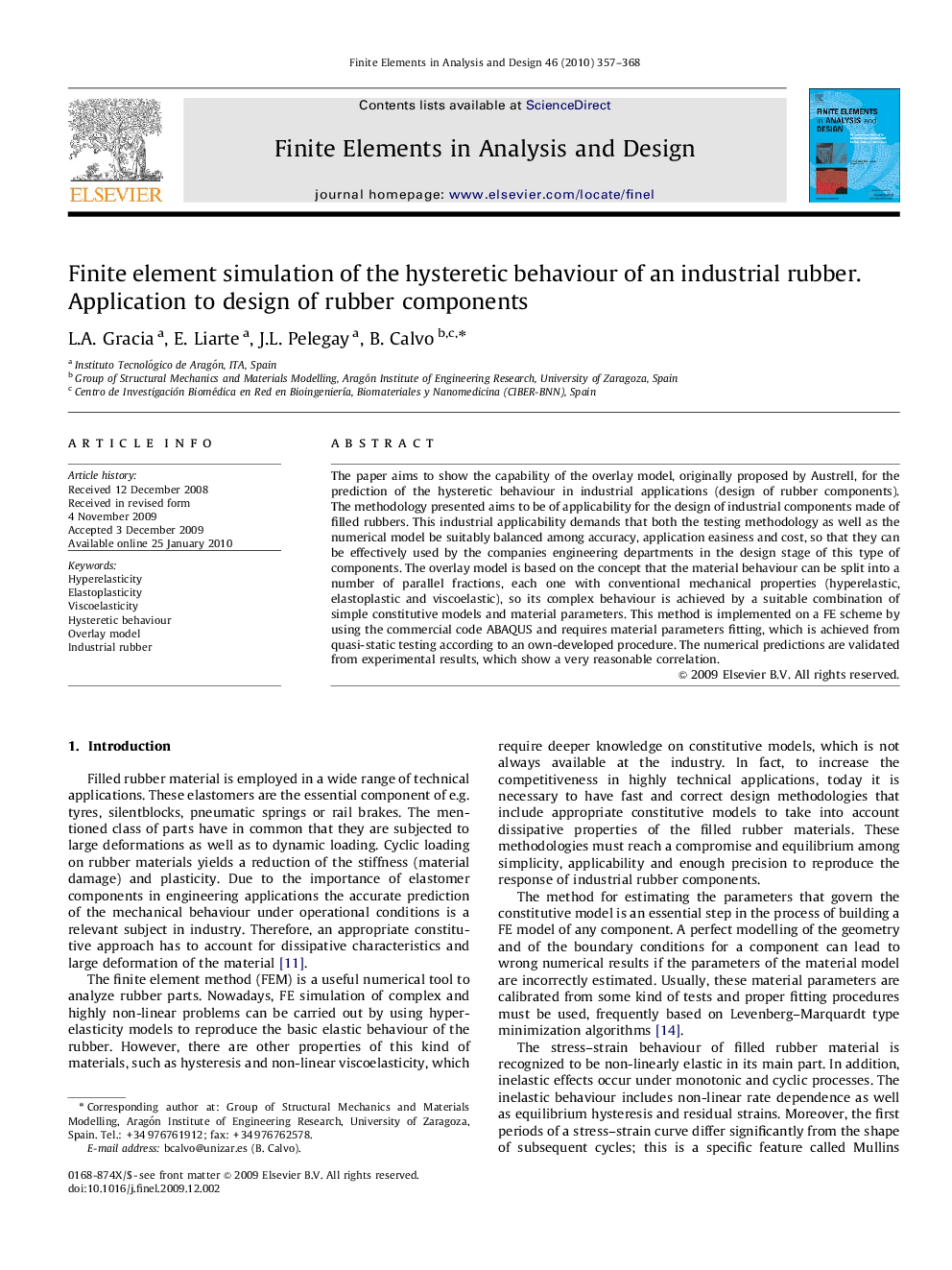| Article ID | Journal | Published Year | Pages | File Type |
|---|---|---|---|---|
| 514218 | Finite Elements in Analysis and Design | 2010 | 12 Pages |
The paper aims to show the capability of the overlay model, originally proposed by Austrell, for the prediction of the hysteretic behaviour in industrial applications (design of rubber components). The methodology presented aims to be of applicability for the design of industrial components made of filled rubbers. This industrial applicability demands that both the testing methodology as well as the numerical model be suitably balanced among accuracy, application easiness and cost, so that they can be effectively used by the companies engineering departments in the design stage of this type of components. The overlay model is based on the concept that the material behaviour can be split into a number of parallel fractions, each one with conventional mechanical properties (hyperelastic, elastoplastic and viscoelastic), so its complex behaviour is achieved by a suitable combination of simple constitutive models and material parameters. This method is implemented on a FE scheme by using the commercial code ABAQUS and requires material parameters fitting, which is achieved from quasi-static testing according to an own-developed procedure. The numerical predictions are validated from experimental results, which show a very reasonable correlation.
